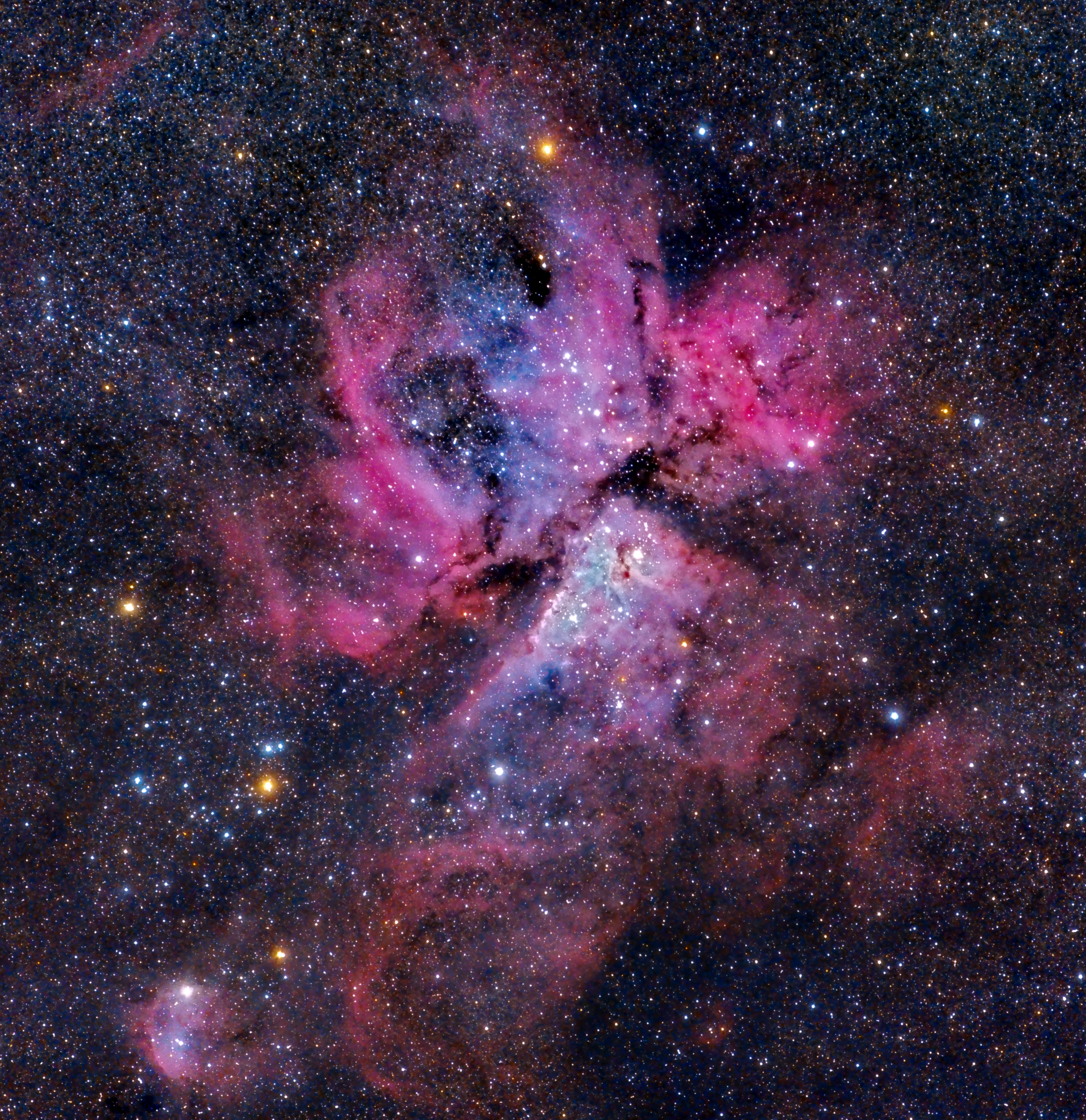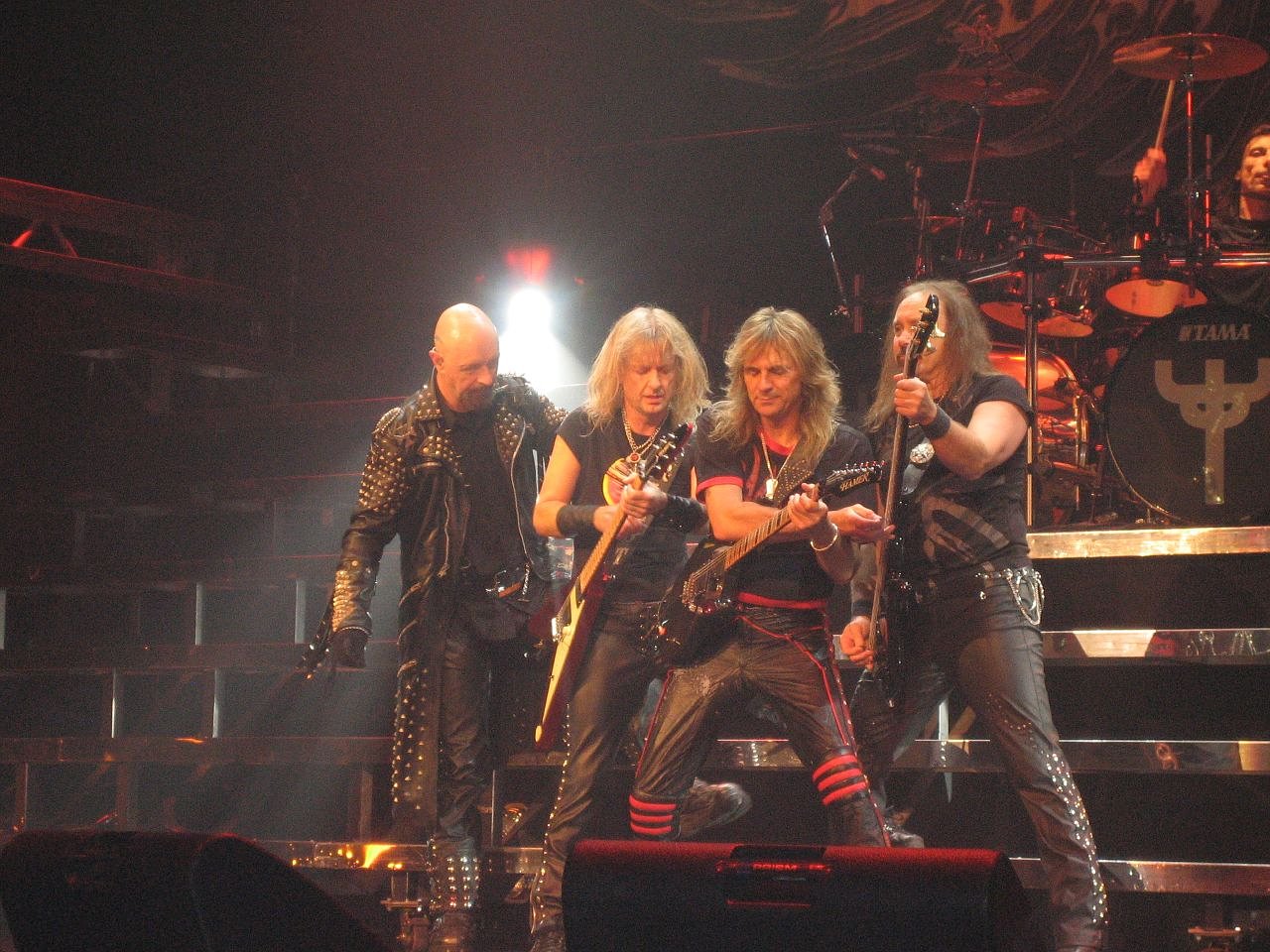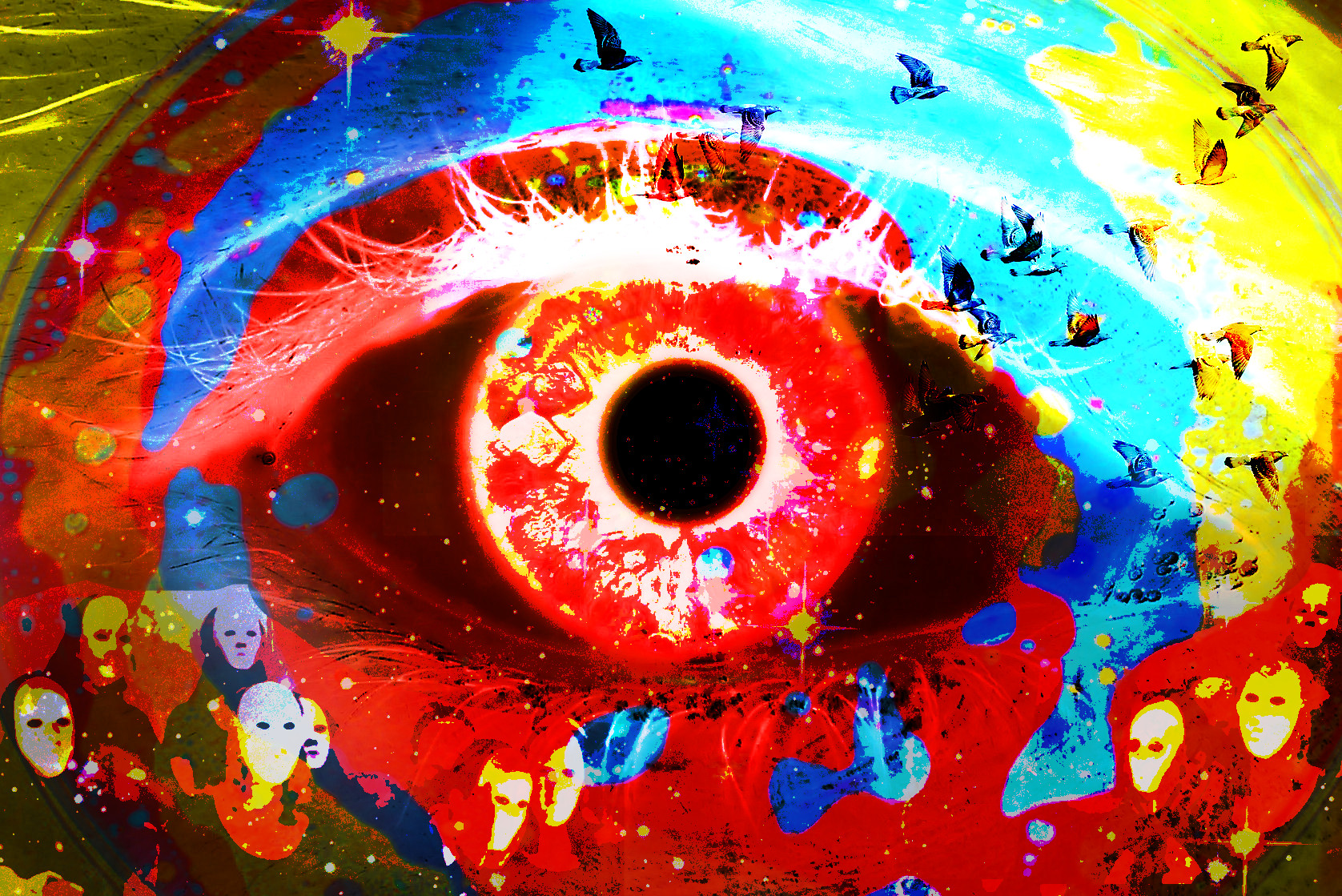|
Computer Graphic (advertisement)
''Computer Graphic'' is a 1993 British television advertisement for Golden Wonder's Pot Noodle snack product. It was the first commercial created for the product by the agency HHCL, who worked with the brand for over twelve years. It stars ''Saturday Night Live'' host Phil Hartman as a newscaster for the fictitious Pot TV, who, after deciding that eating the 'intense' snack requires a 'intense' film, is shown alongside a computer-generated, psychedelic assemblage of flashing images and visuals, inspired by rave culture and the 1989 film ''Eurotechno''. After the advertisement's debut in February 1993, the Independent Television Commission (ITC) received 29 complaints about its use of strobing visuals, and after three reports of epileptic fits being triggered by it, ''Computer Graphic'' was banned by the ITC until HHCL edited a less intense version for further transmission. The ban inspired the commission to implement guidelines on preventing seizures, drawn up with Professor Gra ... [...More Info...] [...Related Items...] OR: [Wikipedia] [Google] [Baidu] |
Golden Wonder
Golden Wonder is a British company that manufactures snack foods, most notably crisps. These include Ringos, Golden Wonder and Transform-A-Snack. Since 2006, it has been a wholly owned subsidiary of the Northern Irish company Tayto, purchased from administration. Founded in 1947, by the 1960s Golden Wonder was the most popular crisp brand in Britain, overtaking Smiths. They were overtaken by Walkers who are the No.1 crisp brand in the UK. History The company was founded in 1947 by William Alexander, who owned a bakery in Stockbridge, Edinburgh. He started making crisps in order to use spare capacity in the deep-fat fryers which he normally used to make doughnuts. The company was named after the Golden Wonder potato, which Alexander believed to be the best for making crisps. In 1952, the company moved to a purpose-built factory in Sighthill. The company was bought by Imperial Tobacco in 1961. By early 1960s, it was manufacturing crisps at three further sites, at Broxb ... [...More Info...] [...Related Items...] OR: [Wikipedia] [Google] [Baidu] |
Graham Harding
Graham Frederick Anthony Harding (19 March 1937 – 20 October 2018) of Aston University was the first professor of clinical neurophysiology in the United Kingdom. He was the first to recognise that television broadcasts and video games could trigger epilepsy Epilepsy is a group of Non-communicable disease, non-communicable Neurological disorder, neurological disorders characterized by a tendency for recurrent, unprovoked Seizure, seizures. A seizure is a sudden burst of abnormal electrical activit .... The Harding test was named after him. References Further reading * 1937 births 2018 deaths Academics of Aston University Neurophysiologists Alumni of the University of Birmingham Alumni of University College London Epileptologists {{UK-med-bio-stub ... [...More Info...] [...Related Items...] OR: [Wikipedia] [Google] [Baidu] |
Madchester
Madchester was a musical and cultural scene that emerged in the English city of Manchester during the late 1980s, closely associated with the indie dance movement. Indie dance (also referred to as indie rave) blended indie rock with elements of acid house, psychedelia, and 1960s pop. The term ''Madchester'' was coined by Factory Records' Tony Wilson, and was popularised by the British music press in the early 1990s. However, the origin of the term can be traced to a script meeting between Factory Records video directors Philip Shotton and Keith Jobling, known as "the Bailey Brothers." They coined ''Madchester'' while developing a script and later suggested it to Tony Wilson. Subsequently, Wilson instructed the band Happy Mondays to rename their EP from "Rave On" to "Madchester Rave On." The Happy Mondays' lead vocalist, Shaun Ryder, recalled: "It was our video directors, the Bailey Brothers, who came up with the term 'Madchester,' but we said, 'Great, yeah, go with it,' becau ... [...More Info...] [...Related Items...] OR: [Wikipedia] [Google] [Baidu] |
Select (magazine)
''Select'' was a United Kingdom music magazine of the 1990s. It was known for covering the indie rock and Britpop genres, but featured a wide array of music. In 2003, ''The Guardian'' called ''Select'' "the magazine that not only coined the word Britpop, but soon came to define it." History The magazine was launched under United Consumer Magazines in July 1990, intending to be a rival to '' Q'' magazine. Its first cover star was Prince. Its first issue sold 100,000 copies. Between July and December 1990, its circulation hovered around 75,000. In April 1991, Spotlight sold ''Select'' to EMAP Metro. Under the editorship of Mark Ellen, the magazine began focusing on the baggy and Madchester scenes. The magazine soon became known for its coverage of Britpop, a term already in use in the music press by writer like John Robb but with an added new context in the magazine front cover by Stuart Maconie in its April 1993 "Yanks Go Home" edition, featuring The Auteurs, Denim, S ... [...More Info...] [...Related Items...] OR: [Wikipedia] [Google] [Baidu] |
Materialism
Materialism is a form of monism, philosophical monism according to which matter is the fundamental Substance theory, substance in nature, and all things, including mind, mental states and consciousness, are results of material interactions. According to philosophical materialism, mind and consciousness are caused by physical processes, such as the neurochemistry of the human brain and nervous system, without which they cannot exist. Materialism directly contrasts with monistic idealism, according to which consciousness is the fundamental substance of nature. Materialism is closely related to physicalism—the view that all that exists is ultimately physical. Philosophical physicalism has evolved from materialism with the theories of the physical sciences to incorporate forms of physicality in addition to ordinary matter (e.g. spacetime, energy, physical energies and forces, and exotic matter). Thus, some prefer the term ''physicalism'' to ''materialism'', while others use them as ... [...More Info...] [...Related Items...] OR: [Wikipedia] [Google] [Baidu] |
The Independent
''The Independent'' is a British online newspaper. It was established in 1986 as a national morning printed paper. Nicknamed the ''Indy'', it began as a broadsheet and changed to tabloid format in 2003. The last printed edition was published on Saturday 26 March 2016, leaving only the online edition. The daily edition was named National Newspaper of the Year at the 2004 British Press Awards. ''The Independent'' won the Brand of the Year Award in The Drum Awards for Online Media 2023. History 1980s Launched in 1986, the first issue of ''The Independent'' was published on 7 October in broadsheet format.Dennis Griffiths (ed.) ''The Encyclopedia of the British Press, 1422–1992'', London & Basingstoke: Macmillan, 1992, p. 330. It was produced by Newspaper Publishing plc and created by Andreas Whittam Smith, Stephen Glover and Matthew Symonds. All three partners were former journalists at ''The Daily Telegraph'' who had left the paper towards the end of Lord Hartwell' ... [...More Info...] [...Related Items...] OR: [Wikipedia] [Google] [Baidu] |
Tango (drink)
Tango is a carbonated soft drink originating in the United Kingdom, primarily sold in the UK and Ireland. It was first launched by Corona in 1950. Corona was purchased by the Beecham Group in 1958, and Corona Soft Drinks by Britvic in 1987. , the flavours available in the United Kingdom include Orange, Apple, Cherry and Mango in addition to flavours of the "Tango Ice Blast" slush range. On 7 April 2021, the UK range was extended to include sugar free Dark Berry. Tango is known in the United Kingdom for their advertisements, mostly those broadcast on television in the 1990s from the Howell Henry Chaldecott Lury advertising agency. Logos and packaging The first packaging that Britvic introduced, upon buying the brand in 1987, featured the word 'Tango' on a circle with an orange background. In 1989, the cast, material and graphic design of the can changed considerably. No longer moulded in the shape of a baked bean can in steel, Tango was now available in an aluminium can, wi ... [...More Info...] [...Related Items...] OR: [Wikipedia] [Google] [Baidu] |
Hi-tech
High tech refers to "high technology". It may also refer to: * High-tech architecture, an architectural style that emerged in the 1970s * HiTech, a computer chess program * Hi-Tech Automotive, a car builder and automotive design house * Hi-Tech (G.I. Joe), a fictional character in the G.I. Joe universe * Hi-Tech (DC Comics) an enemy of Superman Superman is a superhero created by writer Jerry Siegel and artist Joe Shuster, which first appeared in the comic book ''Action Comics'' Action Comics 1, #1, published in the United States on April 18, 1938.The copyright date of ''Action Comics ... in the DC Universe * Health Information Technology for Economic and Clinical Health Act (HITECH Act) * Hi-Tec, shoes and sportswear brand. See also * High Tech Academy, an academy in Cleveland, Ohio, USA * High Technology High School, a high school in Lincroft, New Jersey, USA * Hi-Tek (other) {{disambig ... [...More Info...] [...Related Items...] OR: [Wikipedia] [Google] [Baidu] |
Heavy Metal Music
Heavy metal (or simply metal) is a Music genre, genre of rock music that developed in the late 1960s and early 1970s, largely in the United Kingdom and United States. With roots in blues rock, psychedelic rock and acid rock, heavy metal bands developed a thick, monumental sound characterized by distortion (music), distorted guitars, extended guitar solos, emphatic Beat (music), beats and loudness. In 1968, three of the genre's most famous pioneers – British bands Led Zeppelin, Black Sabbath and Deep Purple – were founded. Though they came to attract wide audiences, they were often derided by critics. Several American bands modified heavy metal into more accessible forms during the 1970s: the raw, sleazy sound and shock rock of Alice Cooper and Kiss (band), Kiss; the blues-rooted rock of Aerosmith; and the flashy guitar leads and party rock of Van Halen. During the mid-1970s, Judas Priest helped spur the genre's evolution by discarding much of its blues influence,Walser (1 ... [...More Info...] [...Related Items...] OR: [Wikipedia] [Google] [Baidu] |
Psychedelic Art
Psychedelic art (also known as psychedelia) is art, graphics or visual displays related to or inspired by psychedelic experiences and hallucinations known to follow the ingestion of psychedelic drugs such as lysergic acid diethylamide, LSD, psilocybin, and N,N-Dimethyltryptamine, DMT. Coined by British psychologist Humphry Osmond, the term "psychedelic" means "mind revealing". By that definition, all artistic efforts to depict the inner world of the Psyche (psychology), psyche may be considered "psychedelic". In common parlance "psychedelic art" refers above all to the art movement of the late Counterculture of the 1960s, 1960s counterculture and early 1970s counterculture. Featuring highly distorted or Surrealism, surreal visuals, bright colors and full spectrums and animation (including cartoons) to evoke, convey, or enhance psychedelic experiences. Psychedelic visual arts were a counterpart to psychedelic rock, psychedelic rock music. Concert posters, album covers, liquid l ... [...More Info...] [...Related Items...] OR: [Wikipedia] [Google] [Baidu] |
Computer-animated
Computer animation is the process used for digitally generating moving images. The more general term computer-generated imagery (CGI) encompasses both still images and moving images, while computer animation refers to moving images. Modern computer animation usually uses 3D computer graphics. Computer animation is a digital successor to stop motion and traditional animation. Instead of a physical model or illustration, a digital equivalent is manipulated frame-by-frame. Also, computer-generated animations allow a single graphic artist to produce such content without using actors, expensive set pieces, or props. To create the illusion of movement, an image is displayed on the computer monitor and repeatedly replaced by a new similar image but advanced slightly in time (usually at a rate of 24, 25, or 30 frames/second). This technique is identical to how the illusion of movement is achieved with television and motion pictures. To trick the visual system into seeing a smoothl ... [...More Info...] [...Related Items...] OR: [Wikipedia] [Google] [Baidu] |



